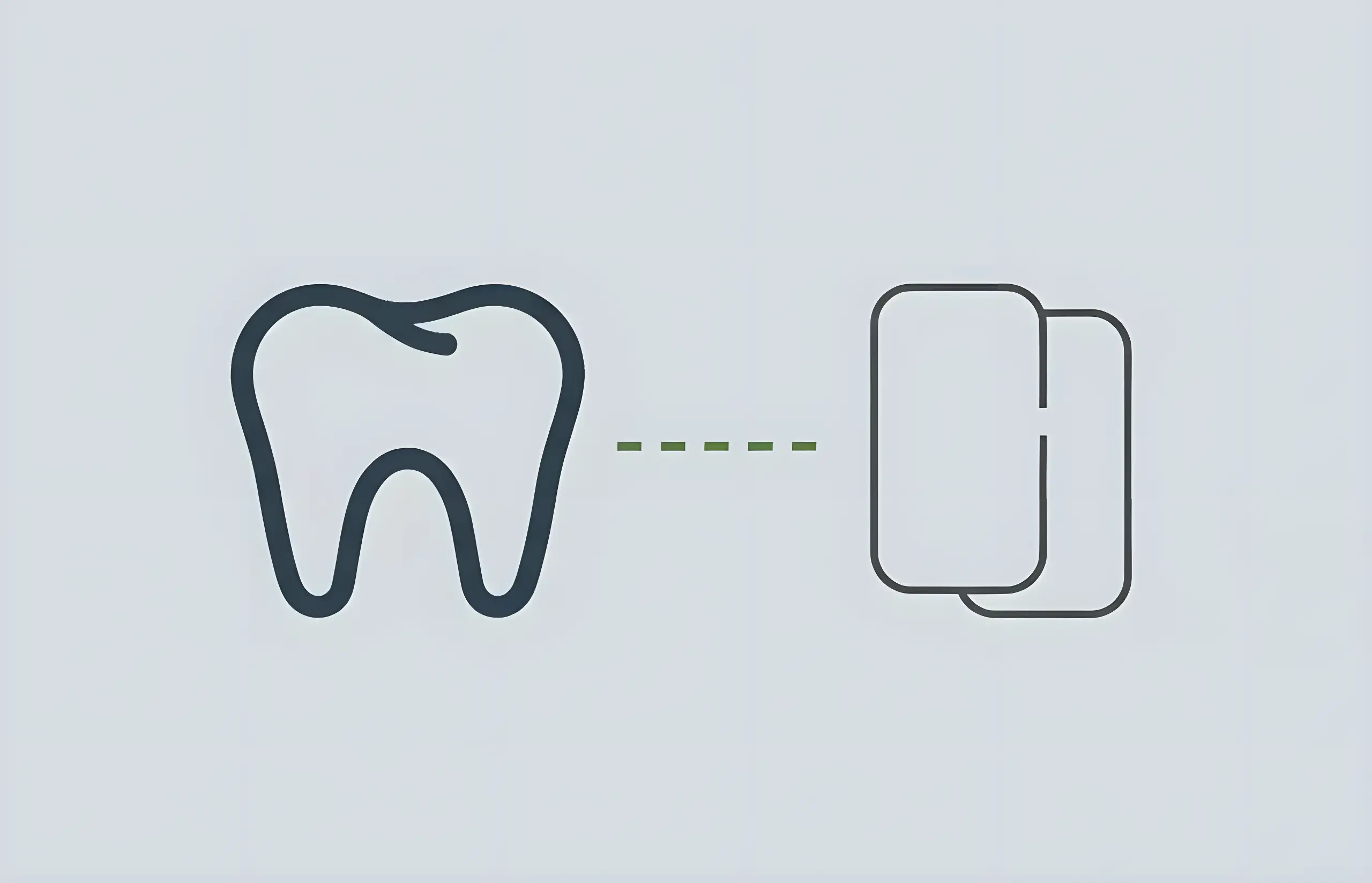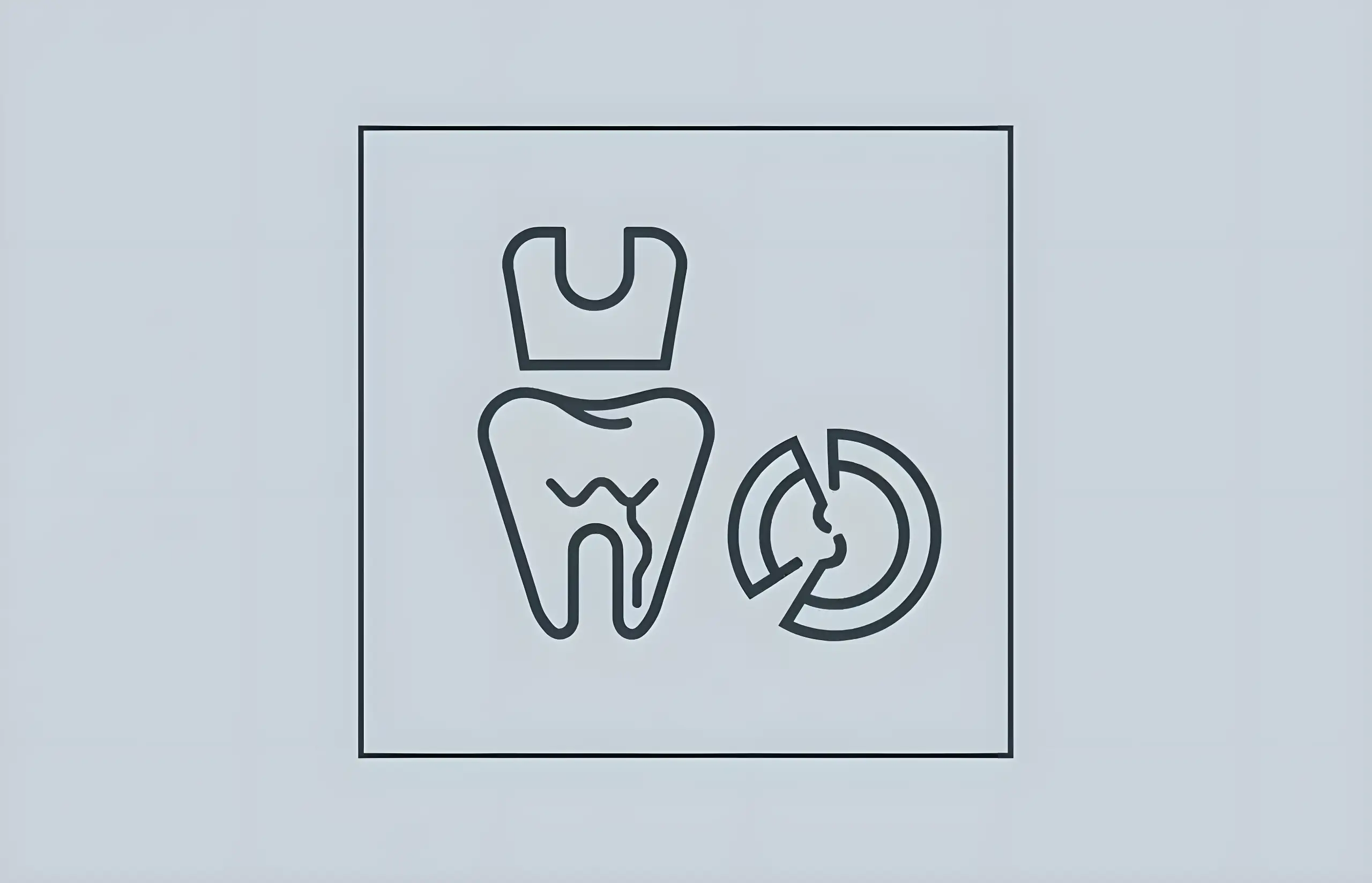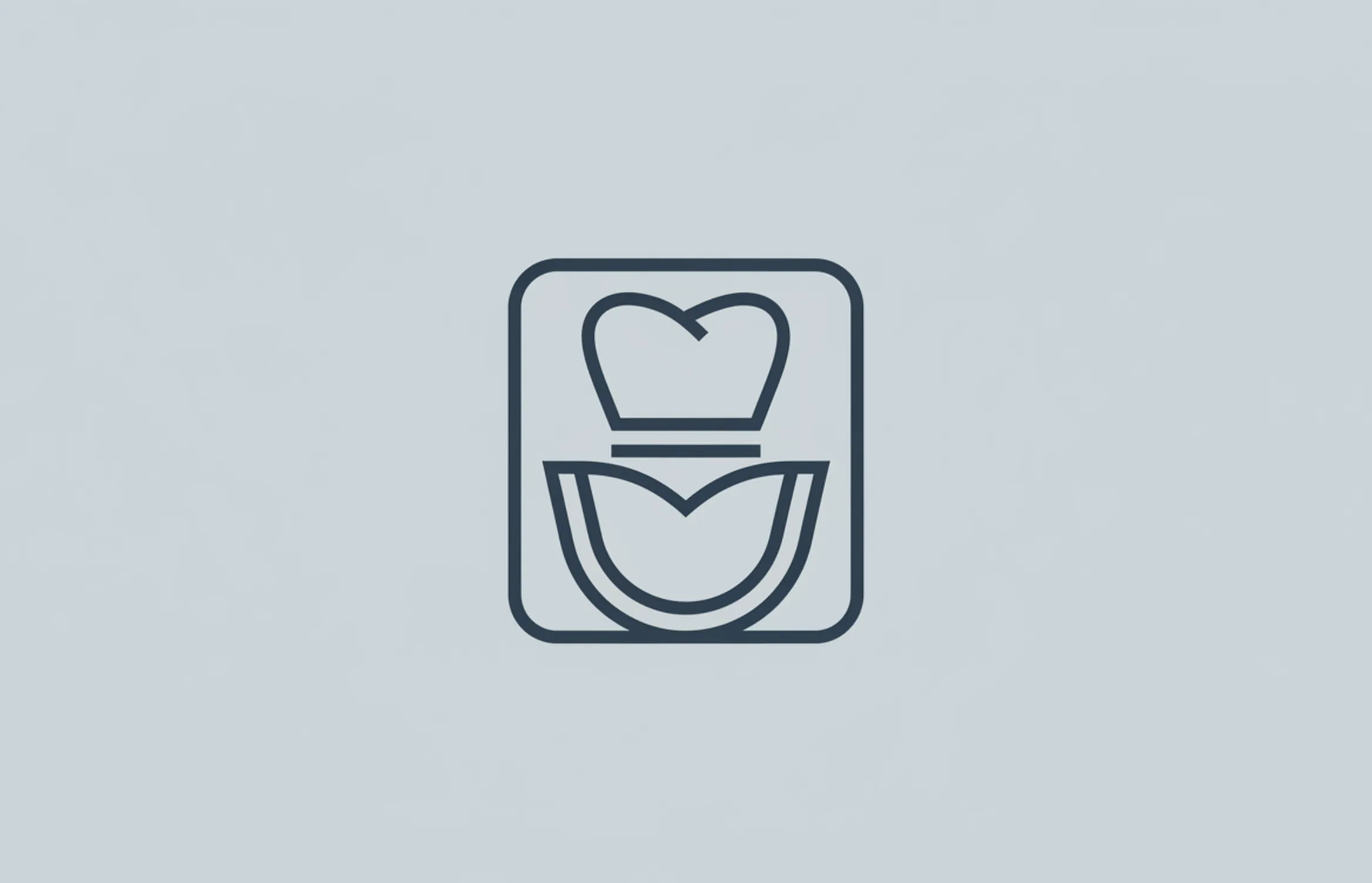Dental crowns are tooth-shaped caps that are placed over or around the teeth to cover them and restore their shape, strength and size, and to enhance their appearance.
Typically, crowns are necessary when huge cavities threaten the health of the teeth. Crowns are cemented (bonded) to the teeth using dental cement and fully encase the whole visible portions of the teeth, which lie at and above the gum lines.
Research shows that dental crowns have excellent longevity, with a practice-based study of 3,404 crown restorations demonstrating a mean annual failure rate of only 2.1% for success and 0.7% for survival at 11 years. Generally, 95% of crowns will remain in the mouth for at least five years, and more than 90% of crowns will not require catastrophic treatment within five years.
The most common technique of dental crowning is the indirect method that uses dental impressions of prepared teeth to fabricate crowns from outside the mouth. The crowns are then inserted during a subsequent dental appointment.
The indirect crowning method allows for the use of strong restorative materials such as casting metal and firing porcelain that require time-consuming fabrication which cannot be done from inside the mouth.
Types of Dental Crowns
Available dental crown options include:
Metallic Crowns
Metallic crowns are durable and can withstand chewing and biting forces. Rarely breaking or chipping and using less tooth structure, metallic crowns provide minimal tooth wear to opposing teeth and are a good option for out-of-sight molars.
The most common materials used to create metallic crowns are gold alloys, base metal alloys (such as chromium or nickel) and other alloys (like palladium). However, metallic crowns are cosmetically imperfect because of their color.
Stainless Steel Crowns
These prefabricated crowns are typically used as temporary protection or filling while permanent crowns are still being fabricated from appropriate materials. Children also benefit from stainless steel crowns that are often used to fit primary teeth until they are replaced by permanent teeth.
Porcelain-Fused-to-Metal Dental Crowns
These crowns offer a blend of metallic durability and porcelain's cosmetic appeal. They can also be fabricated to match the color of adjacent teeth. As good choices for both the front and back teeth, porcelain-fused-to-metal crowns look like normal teeth and give their users the confidence they would have with their normal teeth.
Research shows that porcelain-fused-to-metal crowns have long-term survival rates of 92% to 96% over 8+ years. However, they cause greater wearing to opposing teeth than resin or metallic crowns, and their porcelain parts can easily break or chip. Studies report significantly higher rates for ceramic chipping in veneered crowns compared with monolithic ceramic designs.
All-Resin Crowns
These crowns are amazingly affordable and offer a desirable natural appearance. Nonetheless, they are very prone to fractures and wear down quickly.
All-Porcelain or All-Ceramic Crowns
The crowns can be fabricated to offer perfect natural color, which is perfect for the front teeth. They are also appropriate crowns for individuals with an allergy to metals. However, they wear down opposing teeth quicker than metallic and resin crowns, and are less durable than porcelain-fused-to-metal crowns.
Research shows all-ceramic crowns have survival rates of 84% to 100% over 8+ years. A 2023 systematic review found that lithium disilicate showed notably better clinical performance (2.42) compared to zirconia (2.22), though zirconia demonstrates very favorable mechanical properties and reasonable aesthetics.
Zirconia Crowns
Modern zirconia crowns represent significant advancement in dental materials. Studies show that monolithic zirconia crowns appear to be a viable option in the posterior region with similar prosthetic outcomes to porcelain-fused-to-metal crowns. Research indicates that monolithic zirconia causes less wear of the antagonist tooth than feldspathic porcelain.
Implant-supported monolithic zirconia single crowns have demonstrated 93.5% survival after 5 years, remaining at 92.2% between 6 and 11 years. Zirconia-ceramic implant-supported single crowns show similar incidence of biological complications compared to metal-ceramic crowns but exhibit less aesthetic complications.
Benefits of Dental Crowns
Customized to suit the look, shape, color and size of natural teeth, the crowns offer immense cosmetic value. For instance, individuals with cracked, misshapen, broken or awfully discolored teeth can use porcelain-fused-to-metal or composite resin crowns to replace their terrible teeth and restore their smiles.
Secondly, the crowns mimic the translucency and luster of natural teeth hence providing the feeling and confidence similar to that given by natural teeth. Made from stain-resistant materials such as porcelain and metals, dental crowns are stain-resistant and durable, and are a better choice than dental prosthetics. In fact with better care, the crowns can last up to 15-20 years, with research showing survival rates of 89.9% at 5 years, 80.9% at 10 years, 70.5% at 15 years, and 61.8% at 20 years.
As opposed to dentures that can slide and shift, dental crowns are cemented over implants and damaged teeth or anchored firmly in place by dental bridges. Hence, the crowns save their users the embarrassment of shifting teeth.
Besides, crowns are strong and come with natural tooth-like features, which restore the full function of damaged or missing teeth and allow their users to chew and smile with freedom.
Similarly, the crowns offer protection to decayed, cracked or damaged teeth by encasing the teeth and acting as shields against plaque build-up and further decay. Crowns are stable and do not irritate the gums, eliminating the pain and discomfort that is experienced by users of dentures.
For children, crowns can be used over primary (baby) teeth to prevent tooth decay among children having problems with dental hygiene and to minimize the frequency of general anesthesia and sedation for children who cannot fully cooperate during dental care.
The Dental Crown Procedure
The procedure for fitting a dental crown usually occurs in two stages that require two visits to the dentist. The first stage involves the examination and preparation of the teeth while the second stage involves the placement of permanent crowns.
Examination and Preparation of the Tooth
In preparation for the dental crown, the dentist will take a few X-rays to assess the roots and the surrounding bones to the tooth that is to receive the crown. When the tooth has high risks of injury to its pulp, infection or extensive decay, the dentist will first perform a root canal treatment.
Research shows that the presence of an endodontically treated tooth is a significant risk factor leading to more failures. Studies indicate that endodontic treatment status is the primary determinant of clinical longevity.
After the examinations, the dentist will anesthetize (numb) the area around the tooth, especially the gum tissue, to reduce the pain during the procedure. After that, the dentist will reshape the crown-receiving tooth along the sides and the chewing surface to create room for the crown.
The amount of material removed usually depends on the type of crown to be applied. On the contrary, if the tooth is already too damaged or decayed, the dentist will use a filling material to cover up space and allow the crown to fit.
After reshaping the tooth, the dentist will use dental wax (putty/paste) to take an impression of the tooth. The dentist will request the patient to bite into the wax so that tooth imprint is left, which is sent to the dental laboratory for use as the blueprint for fabricating the crown.
To ensure that the completed crown fits well and does not affect your bite, the dentist will also take the impression of the tooth above and the tooth bellow the crown-receiving tooth. Manufacturing dental crowns usually takes 2-3 weeks and the dentist will give a temporary crown made of acrylic or stainless steel to cover and shield the tooth while the permanent crown is still being fabricated.
The material chosen by the dentist will depend on the location, type and condition of the receiving tooth. Commonly, all-porcelain crowns are placed on front teeth, metal crowns on out-of-sight back molars, and porcelain-fused-to-metal crowns on either back or front teeth.
Placement of the Permanent Crown
During the second visit, the dentist will take out the temporary crown and etch the surface of the receiving tooth with an acid in order to make the surface rough. The rough texture will help to improve the ability of the dental cement to create a stronger bond between the dental crown and the tooth.
The procedure requires localized anesthesia to numb the tooth and gum tissue. The dentist will then fit the crown and check its alignment with the other teeth before using dental cement to fix it into position.
Survival Rates and Risk Factors
A comprehensive retrospective study analyzing 1,037 single crowns placed in 401 patients with a mean follow-up of 134.8 months found:
Survival Rates:
- 5-year survival: 89.9%
- 10-year survival: 80.9%
- 15-year survival: 70.5%
- 20-year survival: 61.8%
Primary Failure Causes:
- Loss of retention (26.5%)
- Tooth loss (13.5%)
- Tooth fracture (12.6%)
Significant Risk Factors: Research has identified three factors that substantially increase failure risk:
- Anterior tooth placement (higher hazard ratio than posterior)
- Non-vital abutments (teeth requiring root canal treatment)
- Bruxism (teeth grinding/clenching habits)
A 2023 study on implant-supported single crowns found that probable bruxism had a hazard ratio of 3.226 (p=0.009), with patients showing significantly higher rates of technical complications and ceramic chipping compared to non-bruxers.
Non-Significant Factors: Interestingly, crown survival was unaffected by patient age, sex, jaw location, tooth type, post-and-core presence, crown material type, provider experience, or smoking status.
How Much Do Dental Crowns Cost?
The cost of dental crowns depends on the materials used, the location where they are to be placed, size, immediate condition of the tooth, and the experience and training of the dentist. Often, dental insurance will cover up to 50-percent of the costs of having dental crowns, but such coverage is not offered for cosmetic treatments.
Typically, porcelain-fused-to-metal crowns cost £300-£850 per tooth, gold-alloy metal crowns cost £300-£1,800 per tooth, base-metal alloy crowns cost £250-£600 per tooth, and all-porcelain crowns cost £350-£900 per tooth.
An initial examination is usually free (depending on the dentist) while dental X-rays will cost up to £150. Any additional preparatory work will vary in price depending on how much is needed and what specific treatments are required.
UK Crown Costs by Type:
- Metallic: £250 - £600
- Porcelain-fused-to-metal (PFM): £300 - £850
- Resin: £250 - £450
- Porcelain: £350 - £950
- Ceramic: £350 - £950
- Zirconia: £350 - £950
NHS Coverage: Dental crowns are available on the NHS as Band 3 Treatment for £219 when medically necessary (not for purely cosmetic reasons). Private treatment is required for cosmetic crown procedures.
Comparison with Other Restorations
For patients considering cosmetic improvements, understanding the differences between dental crowns and veneers is important. Research shows that enamel-bonded veneers have almost perfect survival (99%) and success rates (99%), while crowns offer full coverage protection and restoration of heavily damaged teeth.
A 2023 systematic review found that conventional crown fabrication demonstrated superior clinical outcomes compared to CAD/CAM alternatives, with CAD/CAM manufacturing resulting in higher rates of biological (1.17×), technical (1.14×), and esthetic complications (16.88×).
Final Thoughts
Dental crowns represent a reliable, long-lasting solution for restoring damaged or decayed teeth. With survival rates of 89.9% at 5 years and 80.9% at 10 years, and the ability to last 10-20+ years with proper care, crowns offer excellent value for patients.
The key to successful outcomes is choosing the appropriate crown material for your specific situation, maintaining excellent oral hygiene, addressing teeth grinding with a night guard if needed, and attending regular dental checkups. While endodontically treated teeth and bruxism increase failure risk, proper care and professional monitoring can help maximize crown longevity.
If you're considering dental crowns, consult with a qualified dentist to determine which type of crown is best suited for your needs, budget, and aesthetic goals.
Sources and References
-
[1]
A practice based longevity study on single-unit crownsJournal of Dentistryhttps://pubmed.ncbi.nlm.nih.gov/29800638/
-
[2]
Retrospective clinical study of tooth‐supported single crowns: A multifactor analysisEuropean Journal of Oral Scienceshttps://pmc.ncbi.nlm.nih.gov/articles/PMC9546353/
-
[3]
Risk Factors Associated with Failure and Technical Complications of Implant-Supported Single Crowns: A Retrospective StudyMedicina (Kaunas)https://pmc.ncbi.nlm.nih.gov/articles/PMC10535933/
-
[4]
Clinical Outcomes of CAD/CAM (Lithium disilicate and Zirconia) Based and Conventional Full Crowns and Fixed Partial Dentures: A Systematic Review and Meta-AnalysisCureushttps://pmc.ncbi.nlm.nih.gov/articles/PMC10199723/
All sources accessed and verified on . Medical information reviewed for accuracy and compliance with current guidelines.
Related Articles

My Back Tooth Hurts When I Chew – What Could It Be?
Comprehensive guide to understanding why your back tooth hurts when chewing, including common causes from cavities to wisdom teeth and when to see a dentist

Should You Get Crowns or Veneers for Your Front Teeth?
Comprehensive guide comparing dental crowns and veneers for front teeth, including materials, uses, preparation requirements, longevity, and cost considerations

Should You Get Crowns or Veneers?
Comprehensive guide to choosing between dental crowns and veneers, including clinical indications, contraindications, insurance coverage, and decision criteria for optimal treatment outcomes

Dental Bridges – Costs and Information
Complete guide to dental bridges including types (traditional, Maryland, cantilever), survival rates, procedure details, costs in the UK, and comparison with dental implants

Dental Crowns v Veneers
Comprehensive comparison of dental crowns and veneers including procedures, costs, longevity, survival rates, when to choose each option, and which treatment best preserves your natural teeth

What is the Cost to Repair Chipped, Cracked, or Broken Teeth?
Comprehensive guide to tooth damage repair costs in the UK: NHS Band 1 (£22.70) for minor chips, Band 2 (£62.10) for fillings/root canals, Band 3 (£269.30) for crowns/veneers, with treatment success rates and prevention strategies

Root Canal and Crown – Costs & Information
Learn about root canal treatment and crown placement including procedure details, benefits, survival rates, and costs in the UK

Can You Put Veneers Over Crowns?
Comprehensive guide to placing veneers over crowns, why it's generally not recommended, bonding challenges, crown survival rates, and alternative treatment options
About The Dental Guide
The Dental Guide is a trusted online resource providing evidence-based information about dental health, treatments, and procedures. Our content is created and reviewed by qualified dental professionals to help you make informed decisions about your oral health.
Our Mission
- Evidence-based dental information
- Expert-reviewed content
- Clear, accessible explanations
- Latest treatment options
- Patient-focused guidance
Editorial Standards
- GDC-registered dental professionals
- Peer-reviewed sources
- Regular content updates
- Medical accuracy verification
- Transparent authorship
Important Notice
The information on The Dental Guide is for educational purposes only and should not replace professional dental advice. Always consult with a qualified dentist for diagnosis and treatment recommendations tailored to your individual needs and circumstances.
Medically Reviewed
Reviewed by Dr. Nasim Mechoui , BDS (Bristol)
Share this article
Comments & Discussion
Have questions about dental implants? Share your thoughts or experiences.
